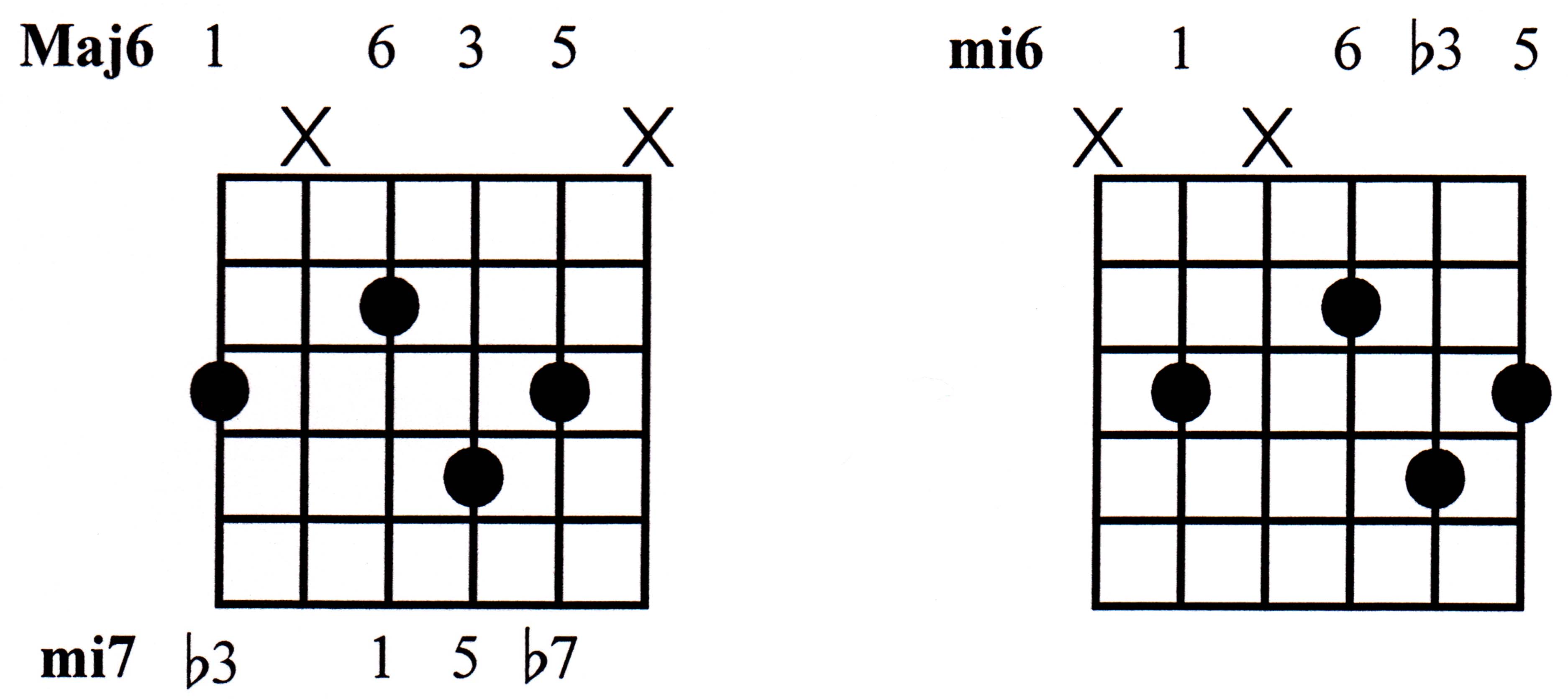
You already know more chords than you think you do, you just don't realize it. In this installment, you're going to take chord shapes you already know and reveal
some other chords you probably do not already know - by transferring, or shifting, them sideways. You maintain the same exact fingering.
Let's begin with a really obvious chord type, the full Barre Major chord (1, 3, 5). When shifted over one string, this shape becomes a minor chord
(1, b3, 5). This is one of the first 'connections' players often make about how a shape can be moved over to form another chord type.

Let's see how this works with minor chords. The full Barre minor chord (1, b3, 5), when "side-stepped", shifted over one string, becomes a
sus2 chord (1, 2, 5).

The next chord will be a little different because it has a couple names, depending upon the location of the root tone. We start with the first chord; above the diagram is outlined the mi7b5 chord (1, b3, b5, b7), with the root on the 5th string. Below, the diagram is outlined the dom9 chord (1, 3, 5, b7, 9), with no root, there is no 1 tone. So the 5th string tone is the perfect 3 tone of the chord. This version is very popular in Blues (think the intro to Stormy Monday as done by the Allman Brothers on their "Live At The Fillmore East" album from 1971).
Now, shift it over a string and you have a dim7 chord (1, b3, b5,
bb7, which is the 6 tone). One curiously wonderful thing about this chord is that
any of the four notes can be the root tone. Raising the shape up three frets, you are cycling the order of the same four notes - any of which can be the root. So above and below the diagram is
an example of this. Don't believe me? Play a D#dim7 at the first fret, move it up to the fourth fret and you still have a
D#dim7 (the D#; is now on the 2nd string), up to the seventh fret, still a
D#dim7! Pretty cool!

Next, we'll look at the full Barre Maj7 chord (1, 3, 5, 7). Shift it over two strings, and it becomes a mi7 chord (1, b3, 5,
b7). But, wait! The second chord is also a Maj6 chord (1, 3, 5, 6) as shown under the diagram.

Finally, let's play a little. In the diagram below you'll see a Maj6 chord (1, 3, 5, 6), but look under the diagram and you'll see the mi7 chord
outlined as well. What we did was take the mi7 chord you played above and switch from playing the b3 on the high E to the low E string. There are other
chords you can do this with, too. In the second diagram, we've shifted over one string and now have a mi6 chord (1, b3, 5, 6) revealed.

There are so many more you can find if you just take chords you know, move them over, even do "partials", just a portion of the chord, and shift it over a string or two or three, your choice. You'll find all sorts of possibilities that will not only expand your chord knowledge, but allow you options you may not have known you had, all based on stuff you already know!
And that is the joy of this instrument, to explore the possibilities of what we already understand, applying them in ways not 'normal'. But, hey, what is normal anyway?
Okay, now shut off your computer and go play with some ideas.
See you next time.